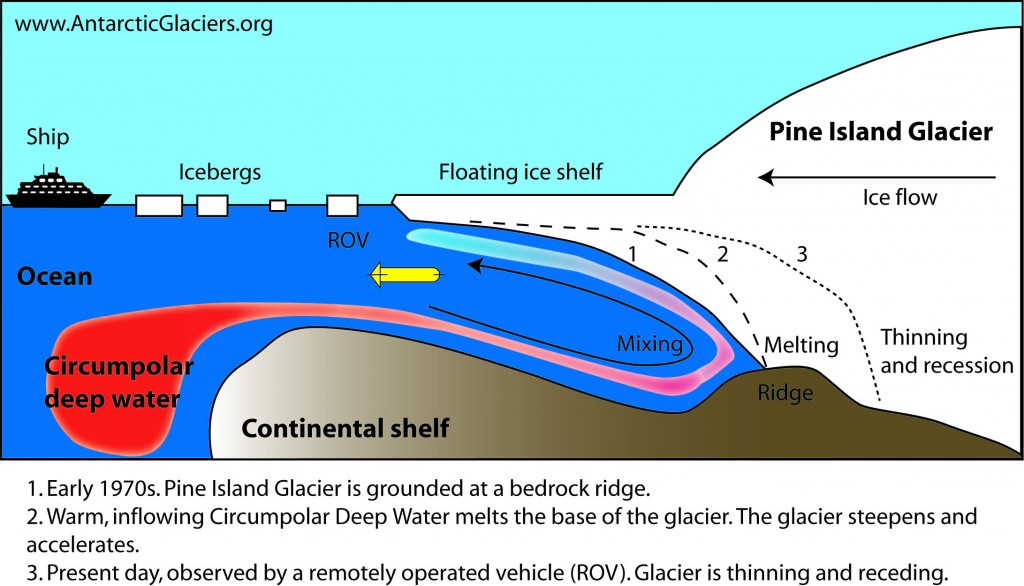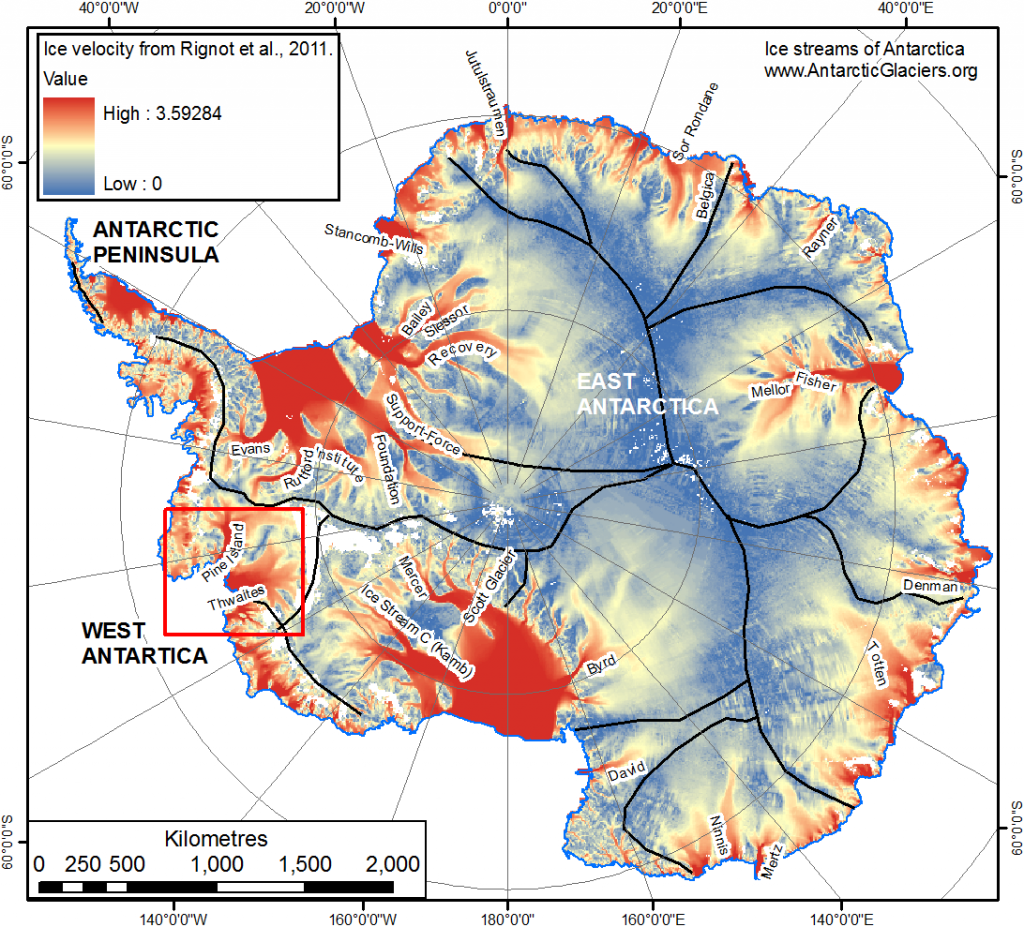What is Circumpolar Deep Water?
Circumpolar Deep Water is derived from a mixture of all the World’s oceans[1]. It is a relatively salty, warm current, >3.5°C above freezing point, which flows onto the continental shelf at depths of more than 300 m[2]. It is overlain by colder, fresher surface waters. Circumpolar Deep Water is critical because it rapidly melts the base of ice shelves. Further, changes in the frequency, duration and extent of cross-continental shelf intrusions of Circumpolar Deep Water may alter the rate at which basal melting occurs[1].

Circumpolar Deep Water (CDW) is a key component of the Antarctic Circumpolar Current[3]. In the Amundsen Sea, CDW is found near to the shelf break, where the continental shelf acts as a large topographic barrier for the majority of the deep water. The height of the offshore CDW in the water column and the height of the continental shelf are therefore crucial in determining whether CDW can flow onto the continental shelf. A significant depression on the continental shelf, such as a glacial trough, may allow a thicker, undiluted layer of CDW onto the continental shelf.

How is Circumpolar Deep Water changing?
Outlet glaciers in the Amundsen Sea Embayment have accelerated[4-6], receded[7] and thinned in recent years, which has largely been attributed to increased melting of their ice shelves by Circumpolar Deep Water[8, 9]. This has resulted in grounding line recession[7], which may result in marine ice sheet instability in West Antarctica.
In Pine Island Bay, the ice shelf buttressing Pine Island Glacier is melting rapidly. Observations show that the temperature and volume of CDW in Pine Island Bay have increased[2], which is able to reach the glacier through a deep submarine glacial trough[3]. Meltwater production has increased by 50% since 1994, resulting in stronger sub-ice-shelf circulation, leading to the formation and enlargement of an inner cavity, where sea water at 4°C can readily access the grounding line[2].

Why is Circumpolar Deep Water changing?
CDW may be increasingly driven onto the continental shelf in response to changing wind patterns in the Bellingshausen Sea[10], Amundsen Sea[11] and western Antarctic Peninsula[1, 12]. However, the exact mechanisms involved are complex and poorly understood.

One cause may be related to changes in the Southern Annular Mode (SAM). The SAM is the main mode of variability in atmospheric circulation in the southern high latitudes. The SAM has changed towards positive polarity, meaning decreased pressure over the Antarctic and increased pressure at the mid-latitudes in recent years, likely driven by changes in greenhouse gases and the ozone hole[1]. Continued movement of the SAM towards positive polarity will result in strengthening and poleward displacement of the circumpolar westerlies. Across the Antarctic Peninsula, a positive SAM is associated with strong warming, strengthening of the westerlies, and a shift in storm tracks[13].
Stronger westerlies, associated with a positive SAM, will result in more Circumpolar Deep Water moving onto the Antarctic continental shelf, leading to increased heat transport and more melting at the grounding line and beneath ice shelves[1].
Steig et al., (2012) found that both interannual variability and long-term changes in westerly wind stress in the Amundsen Sea Embayment was relevant to forcing more CDW onto the continental shelf[8]. They found that this was strongly influenced by changes in the tropics, which may be an even greater influence than changes in the Southern Annular Mode.
Summary
The ice, the ocean and the atmosphere are all intrinsically linked, and in Antarctica we now see how complex changes in atmospheric circulation, driven by climate change and the ozone hole, are changing ocean circulation. Increased upwelling of warm, salty Circumpolar Deep Water is melting away the base of the ice shelves and the grounding lines of some of the largest, most vulnerable glaciers and ice streams in Antarctica, resulting in rapid, far-reaching and irreversible changes.

Has anyone bothered to check for thermal venting increasing in the depths of the ocean contributing to the warming; or did we just assume that because it fits the agenda that global warming offered a convenient scapegoat to garner more funding without doing any real investigating?
noice… but actually it was good